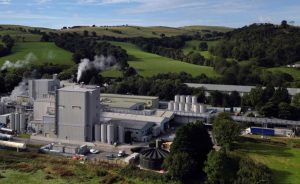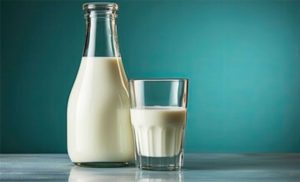Seeing this trend continue has caused Schmidt, of Grazing Plains Farm in Newton, to look for other avenues to sell his milk.
In addition to selling his milk to a local co-op, Schmidt is now making cheese. Last year, he bought a small pasteurizer. This spring, he built an industrial kitchen.
Schmidt is a third-generation dairy farmer whose ancestors homesteaded in Newton in 1874, starting a diversified farm. Like most small dairy farmers, Schmidt loves his cows. In addition to calling them his babies, most of them have names, including Nadine, Mullet, Buffalo and Namaste. Like Schmidt, many dairy farmers do not want to give up their business. But making ends meet is difficult.
Cheese
Although only a small percentage of his milk is utilized in making cheese. One day, Schmidt hopes to make cheese full time and give up selling milk to the co-op. But for now, he continues to sell milk wholesale and pasteurized feta, cheddar and Havarti retail.
Michael Kirkpatrick of Growing Farmers in Germantown, Ohio believes growth and sustainability comes with innovation. Kirkpatrick, through teaching and mentoring, helps farmers across the country form better systems and increase profits.
“You have to look at which systems are the most profitable,” Kirkpatrick said. “You need efficiencies across all aspects.”
More than a decade ago, Marge Randles of Argyle Cheese Farmer in Argyle, N.Y., contemplated switching her family’s milk operation to cheese. As a trained financial adviser, she saw her husband’s fourth-generation dairy farm’s profits dwindling. That’s when Randles decided to learn to make cheese. After three years of classes and experimentation, she and her husband David embarked on a new venture.
“I could see from my accounting that the dairy industry was in decline,” Randles said. “I basically spent three years in my kitchen.”
Along with cheddar, Argyle produces Caerphilly cheese – an old Welch recipe, and basil garlic and dill & chive cheese curds.
Randles, like Schmidt, learned different breeds of cows are better for certain types of cheese. Schmidt is switching over to mainly Jersey cows because, he said, their milk contains more protein.
Yogurt
Along with cheese, Randles learned how to process yogurt. Yogurt requires less time to make and can be made in a small industrial kitchen. Their Greek yogurt has won first prize in the New York State Fair several times.
“Yogurt is where the money is,” Kirkpatrick said. “There’s tons of farms that are crushing it with yogurt.”
In addition to cheese and yogurt, Kirkpatrick recommends buttermilk and cheesecake.
Eventually Randles and her husband gave up the farm, expanded their industrial space and partnered with another farmer. Randles spent years honing her product and marketing it throughout New York.
“Making cheese (and yogurt) is a full-time job,” she said. “We can’t keep up with demand.”
Schmidt is just starting to market his product. Grazing Plains Farm cheese can be found at Prairie Market & Deli in Newton and Simple Abundance in South Hutchinson.
Kansas dairy facts
Kansas has more than 270 large and small dairy farms. In 2019, Kansas dairies produced 3.8 billion pounds of milk.
During May, milk production in Kansas totaled 335 million pounds, up 2% from one year earlier, according to the USDA’s National Agricultural Statistics Service. The average number of milk cows was 169,000 head, 7,000 head more than in May 2019. Milk production per cow averaged 1,985 pounds.
Figuring it out
Schmidt, who processes 300 pounds of cheese each month, is just starting out with cheese. He introduces new products and keeps the tried and true. One of his specialties is Tilsit cheese, which he makes from an old East Prussian Mennonite recipe. This semi-soft, mild-flavored cheese takes a little more tending to.
By grazing his cows on cover crops and switching pastures each day, Schmidt cuts down on his feed bill. He also raises sheep. Although he’s squeaking by on milk sales to the coop, Schmidt is looking to change his paradigm.
“I don’t see a future for (small) dairy farmers in the commercial milk market,” he said. “I think cheese is a pretty golden market for us.”













